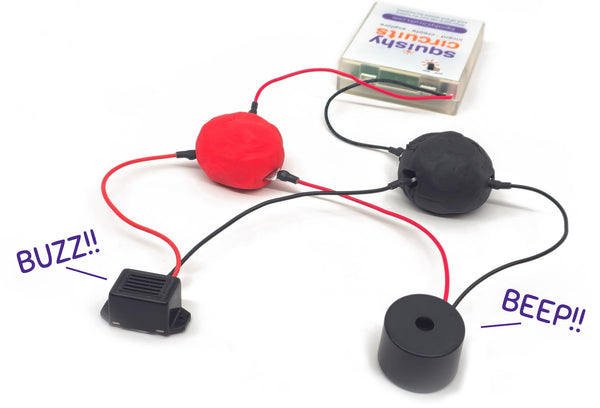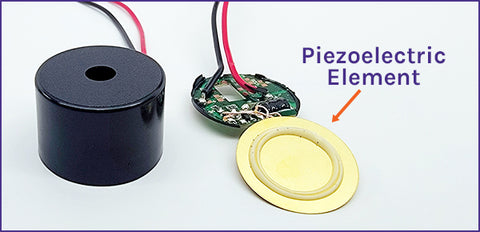How to Use a Buzzer
How to Use a Buzzer
Buzzers add noise to your Squishy Circuits! You’ll notice that there are two types – a mechanical buzzer and a piezoelectric buzzer. What’s the difference? Not just the shape of the case! The difference is how the buzzers create noise. If you compare the noises they create side-by-side, the mechanical buzzer creates a low pitch buzz, meanwhile the piezoelectric buzzer creates a high pitch beep. If the volume is too loud, place a piece of tape over the top.
Remember that buzzers have polarity. The red wire goes to the red wire of the battery holder and the black wire goes to the black wire of the battery holder.


Piezoelectric buzzers do not have a metal armature, but instead rely on a piezoelectric element. Piezoelectric is derived from the Greek word ‘piezo’ which means pressure or push. As the name implies, a piezoelectric element will create a small amount of electricity when it is pushed or flexed. Conversely, if you apply a voltage across a piezoelectric element, it will slightly flex. Piezoelectric buzzers rely on this process to create vibrations. The buzzer applies a voltage across the piezoelectric element thousands of times per second which flexes the piezoelectric element to create noise.

Download Printable Instructions

